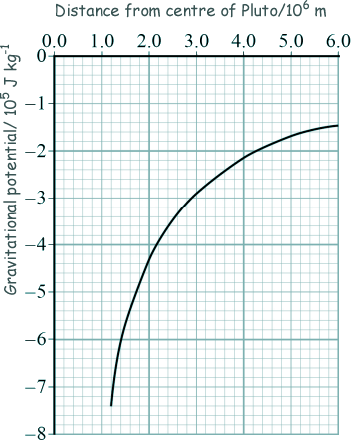Circular Motion Q1. (a) Derive an expression to show that for satellites in a circular orbit T2 ∝ r3 where T is the period of orbit and r is the radius of the orbit. [2 marks] (b) Pluto is a dwarf planet.
The mean orbital radius of Pluto around the Sun is 5.91 × 109 km compared to a mean orbital radius of 1.50 × 108 km for the Earth. Calculate in years the orbital period of Pluto. [2 marks] (c) A small mass released from rest just above the surface of Pluto has an acceleration of 0.617 m s−2. Assume Pluto has no atmosphere that could provide any resistance to motion. Calculate the mass of Pluto. Give your answer to an appropriate number of significant figures. radius of Pluto = 1.19 × 106 m [3 marks] (d) The graph shows the variation in gravitational potential with distance from the centre of Pluto for points at and above its surface.
A meteorite hits Pluto and ejects a lump of ice from the surface that travels vertically at an initial speed of 1400 m s−1 . Determine whether this lump of ice can escape from Pluto. [3 marks] (10 marks total) |
Follow me...
|







